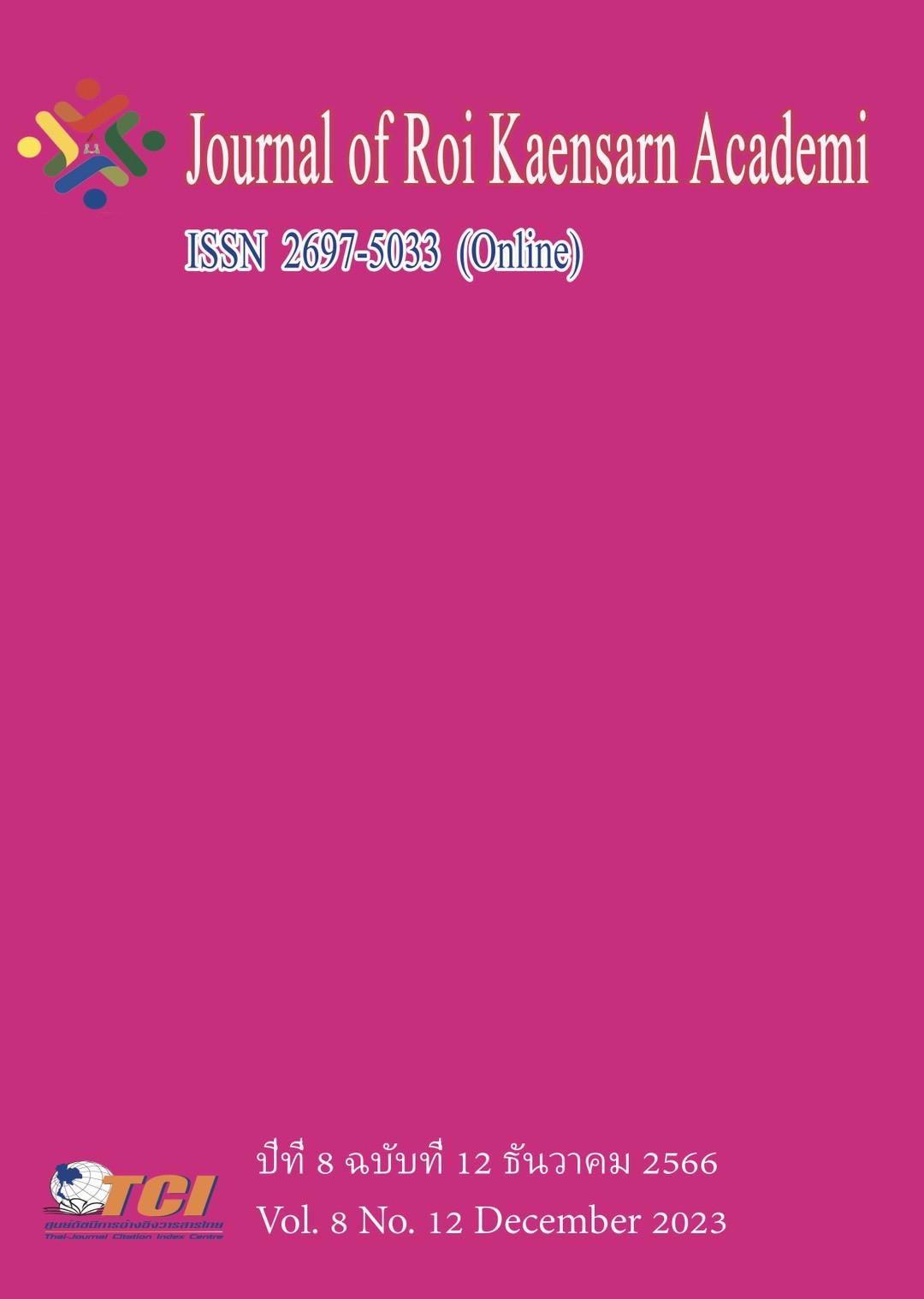The Model for Development of Successful Textile Industry
Main Article Content
บทคัดย่อ
Objectives: 1) To study the general management of textile industry; 2) To study the factors of the model for development of successful textile industry; and 3) To develop a model of structural formula of the model for development of successful textile industry. This is a quantitative research. The sample groups consist of 500 entrepreneurs or business managers in textile industry; while 250 samples are from mid-size and small-size industry, and 250 samples are from big-size industry. Statistics uses are descriptive, inferential, and multiple regression statistics.
The research results reveal that: 1) The general management of textile business industries stretch from 10-20 years manufacturing goods for sale within the country, and the sources of funds used to support businesses are from banks or financial institutions; 2) Analysis results of the significant levels of the factors of the model for development of sucessful textile industry. In general, the significant level is at a high level. And when individual factors are taken into account, all factors are rated the significance at a high level; of which technology factor is the highest, second to that is marketing factor, follow by organizational resources factor, and organizatinal success, in that order; and 3) Analysis results of the developed model of structural formula reveal that the possibility value of Chi-Square Distribution is equal to 0.158, the value of Relative Chi-Square is equal to 1.220, the Conformity Index Value is equal to 0.960, and the Root Mean Square Error of Approximation value is equal to 0.016, considered passed according to evaluation criteria, and in consistent and in coherent to the empirical data.
Article Details
เอกสารอ้างอิง
Abbas, J., & Sagsan,M. (2019) Impact of Knowledge management Fractices on green innovation and corporate sustainable development : Astructralanaly. Journal of cleaner Production, 229(2019), 611-620.
Akgün, A. E., & Polat, V. (2021). Strategic orientations, marketing capabilities and innovativeness: an adaptive approach. Journal of Business & Industrial Marketing, 37(4), 918-931.
Arbuckle, J. L. (2019). IBM SPSS Amos 22 user’s guide. Amos Development Corporation.
Borazon, E. Q., Huang, Y. C., & Liu, J. M. (2021). Green market orientation and organizational performance in Taiwan’s electric and electronic industry: The mediating role of green supply chain management capability. Journal of Business & Industrial Marketing.
Comrey, A. L., & Lee, H. B. (1992). A first course in factor analysis. Lawrence Erlbaum Associates.
Latif, K. F., Afzal, O., Saqib, A., Sahibzada,U. F., & Alam, W. (2021). Direct and configurational paths of knowledge-oriented leadership, entrepreneurial orientation, and knowledge management processes to project success", Journal of Intellectual Capital, 22(1), 149-170.
Lee, J. J., & Meng, J. (2021). Digital competencies in communication management: A conceptual framework of Readiness for Industry 4.0 for communication professionals in the workplace. Journal of Communication Management, 25(4), 417-436.
Nunnally, J. C. (1978). Psychometric theory (2nd ed). New York: McGraw-Hill.
Office of Industrial Economics. (2564). The Future of Thai Textile Industry to the era of “New Normal” Retrieved from https://www.oie.go.th/assets/portals/1/fileups/2/files/ArticlesAnalysis
/Textile_industry_NewNormal.pdf
Office of Small and Medium Enterprise Promotion. (2564). Operation Plan on Small and Medium Enterprise Promotion by Branch. Retrieved from https://www.sme.go.th/ upload/mod_download
Research Center, Government Savings Bank. (2564). Industrial Manufacturing of Textile and Clothing. Retrieved from https://www .gsbresearch.or.th/wp-content/uploads/2020/09/IN_textile_8_63_ detail-1.pdf
Rovinelli, R. J., & Hambleton, R. K. (1977). On the use of content specialists in the assessment of criterion referenced test item validity.Dutch Journal of Educational Research, 2, 49-60.
Royo-Vela, M., Salazar, J. C. A., & Blanco, F. P. (2021). Market orientation in service clusters and its effect on the marketing performance of SMEs. European. Journal of Management and Business Economics, 31(1), 1-21.
Sawangrat, N. (2020). Model Development Analyzing Casual Affecting the Effectiveness Logistic Industry Organization in the East Economic Corridor Area of Thailand. Journal of Psychology and education, 57(9), 6955-6963.
Sawangrat, N. (2020). Organizational Success from the Perspective of the Learning Organization and Innovative Organization. Journal of Industrial Business Administration, 2(1), 35-47.
Shahzadi, A., Li, S., Sahibzada, U. F., Malik, M., Khalid, R., & Afshan, G. (2021), "The dynamic relationship of knowledge management processes and project success: modeling the mediating role of knowledge worker satisfaction"
Business Process Management Journal, 27(6), 1657-1676.
Sharma, M., Luthra, S., Joshi, S., & Kumar, A. (2022). Analysing the impact of sustainable human resource management practices and industry 4.0 technologies adoption on employability skills. International Journal of Manpower, 43(2), 463-485.
Thailand Textile Institute. (2564). Thai textile Statistics. 2553/2554. Thailand Textile Institute.
Ting, I.W.K., Sui, H.J., Kweh, Q. L., & Nawanir, G. (2021). Knowledge management and firm innovative performance with the moderating role of transformational leadership" Journal of Knowledge Management, 25(8), 2115-2140.

